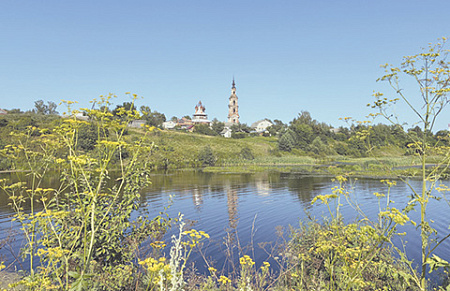
In the quiet Russian village of Kurba, in the Yaroslavl region, stands a decaying masterpiece of world architecture: the Church of the Kazan Icon of the Mother of God. Built in 1770, it is the only centric church in the world with a unique 16-petal rotunda design. Its walls, once covered in a continuous carpet of 350 biblical frescoes, are now crumbling, a testament to a century of neglect that saw this baroque marvel fall into a state of critical disrepair.
The church’s decline is a poignant reflection of Russia’s turbulent history. Once the vibrant heart of the Kurbsky princely estate, where bustling fairs were held, the temple’s fate turned in the 1930s. Stripped from the Orthodox Church by Soviet authorities, it was repurposed first as a tractor station, then as a warehouse for medicine and fertilizers. By the 1990s, following the collapse of the USSR, the architectural gem was completely abandoned, its former glory fading into ruin.
“The temple is unique from any point of view,” notes Tatyana Yuryeva, a professor at Yaroslavl State Pedagogical University. “Its Naryshkin Baroque architecture and 18th-century frescoes, combining canonical painting with innovative elements, have almost no analogues in Russian art.” This uniqueness, however, was not enough to save it from decades of dereliction, becoming a haunt for vandals as its grandeur slowly disappeared.
A glimmer of hope emerged in 2016, sparked by the very modern tool of social media. “I accidentally saw the Kazan Church in social networks,” recalls Olga Shitova, an activist who now organizes the “Kurba Will Live!” festival to raise funds and awareness. “It hooked me with its unusual shape, and also its abandonment and sadness. My heart immediately responded; I wanted to save the ancient church.” Shitova and other volunteers began a grassroots campaign to rescue the dying monument from oblivion.
The path to restoration is long and fraught with challenges. Initial conservation work has been completed, including a temporary roof to allow the building to dry out and the reinforcement of its vulnerable foundation. A full restoration plan was approved in 2023, but progress is slow, hampered by a lack of significant funding. Organizers note a decline in the tradition of private philanthropy in Russia, coupled with a general public mistrust of charitable foundations, making large-scale projects like this immensely difficult.
Despite the hurdles, the effort signifies more than just saving a building. Activists and residents see the church’s revival as a catalyst for the revival of the village itself. “When a temple is reborn, life around it also brightens—apathy, despondency, and a sense of hopelessness disappear,” Shitova says. This sentiment is echoed by the church’s rector, Father Ioann Lozan, who links the community’s well-being to its spiritual core. For the dedicated few working under the vast Russian sky, the fight for Kurba’s church is a fight for collective memory, local identity, and the belief that even the most profound decay can be reversed through persistent, unwavering effort.
